1.e4 c5 2.Nf3 Nc6 3.c3 d5 4.e5
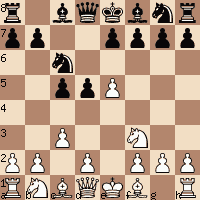
Although this move is a serious positional error, several players have played it against me over the board.
Question:
So why is 4.e5 such a serious mistake?
Answer:
Every opening has tradeoffs. It all starts with the pawn structure. The pawns control certain squares, and the pieces work around the placement of the pawns.
Nature of the French Defense
The French Defense is extremely solid, but there’s a tradeoff. Black places his pawns on e6 and d5, and creates a light square blockade that White has to work hard to break down.
Question:
What’s the biggest tradeoff in this opening?
Answer:
Black’s pawn structure is very solid, but he ends up with a “problem piece.” His light square bishop is locked behind his own pawn chain. That means Black must often expend a great deal of energy to find active play for this bishop.
Here’s a real life position that has occurred from grandmaster play on many occasions:
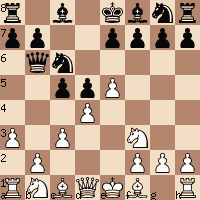
4...Bg4
Now let’s compare that position to the one in the game.
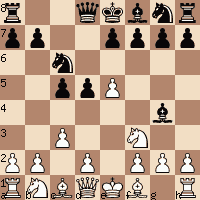
After 4…Bg4, Black gets all the advantages of a French without a bad bishop. That’s the main reason Black quickly gets a large advantage in this game. Not only that, he gets a great post for his knight on f5, also a result of 4.e5.
Every move creates a weakness.
Each time you move a piece or pawn, you gain control of some squares, and lose control of others.
Pawns can’t go backwards.
When you advance a pawn, its ability to control certain squares is gone forever. That can be a serious thing, especially when a knight occupies that square, as happens in this game.
5.Qa4
All threats aren’t created equal.
Make sure your moves create some kind of long term value. At first glance 5.Qa4 looks good, because it pins my knight, and attacks my bishop.
However, I will immediately unpin my knight, and simply exchange the bishop, damaging White’s pawn structure in the process.
This means White’s threats don’t have any real meaning, and there was no way to build upon them.
5...Qd7 6.Bb5
White could not preserve his pawn structure.
6.Be2 Bxf3 7.Bxf3 Nxe5 8.Qxd7+ Kxd7 9.Bxd5 Nd3+ 10.Ke2 Nf4+ winning the bishop.
6...Bxf3 7.gxf3 e6 8.d4 a6 9.Be3 cxd4 10.cxd4 Rc8 11.Bxc6 Qxc6 12.Qb3
White now uses another valuable move to retreat his queen. This is a good moment to recall the move 5.Qa4, and remember the importance of moving pieces to squares that create long term value (vs. making easily defendable short term threats).
After 12.Qxc6+ Rxc6 Black has a much better ending because of White’s doubled pawns, and the post for his knight on e5.
12...Ne7 13.0–0 Nf5
And now it’s easy to see why 4.e5 was a positional error.
14.Rc1
After the game my opponent told me he knew I would sacrifice my queen, and thought that he would have good chances in the middlegame after the sacrifice.
That means he provoked 14…Qxc1 because he knew he was getting a bad game, and had been outplayed strategically.
So 14.Rc1 was an effort to change the character of the struggle, by steering the contest into unclear tactical waters. Although it didn’t work out in this game, it’s often good to keep this in mind.
If you sense the natural course of events won’t work out well, look for a way to create a radical change.
14...Qxc1+ 15.Bxc1 Rxc1+ 16.Kg2 Be7
This was the most important move of the game. When I played the queen sacrifice, I initially intended 16…b5.
That’s because sacrificing the b pawn also commits to sacrificing the a pawn.
That’s a huge commitment, because White will create two passed pawns on the queenside. That means I will lose the game if I don’t checkmate White’s king or win back a lot of material.
17.Qxb7 Nh4+ 18.Kh3
18.Kg3 Rg1+ 19.Kf4 Bg5 mate.
18...g5
An important move that creates an escape square for my king.
19.Qa8+
19.Qxa6 Ng6 20.a4 Nf4+ 21.Kg4 Rg1 mate.
19...Bd8 20.Qxa6
White doesn’t see the extreme danger to his king.
20...Rg1
Cutting off all escape squares.
21.Qb5+ Kf8 22.Qe2 h5 23.a4
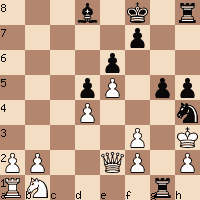
23...Nxf3 24.Qxf3 g4+ 25.Qxg4 hxg4 mate.
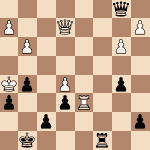
White could not preserve his pawn structure.
6.Be2 Bxf3 7.Bxf3 Nxe5 8.Qxd7+ Kxd7 9.Bxd5 Nd3+ 10.Ke2 Nf4+ winning the bishop.
6.Be2 Bxf3 7.Bxf3 Nxe5 8.Qxd7+ Kxd7 9.Bxd5 Nd3+ 10.Kf1 Nxc1 11.Bc4
what a nice